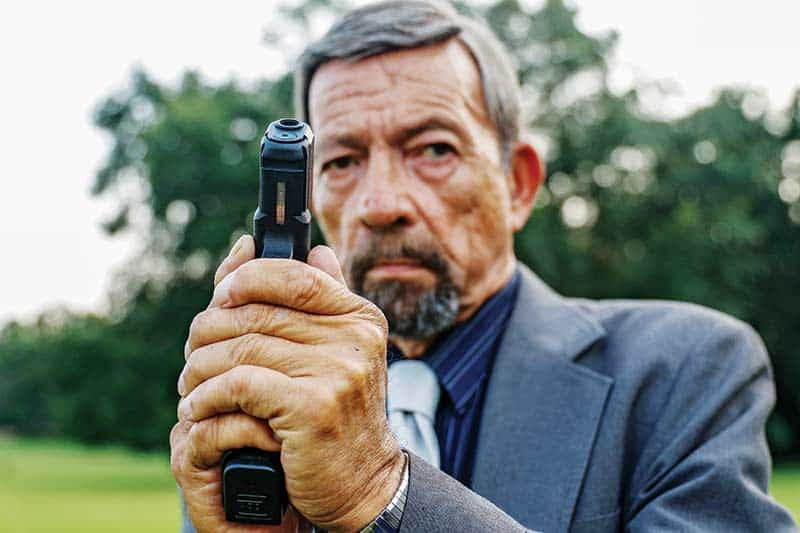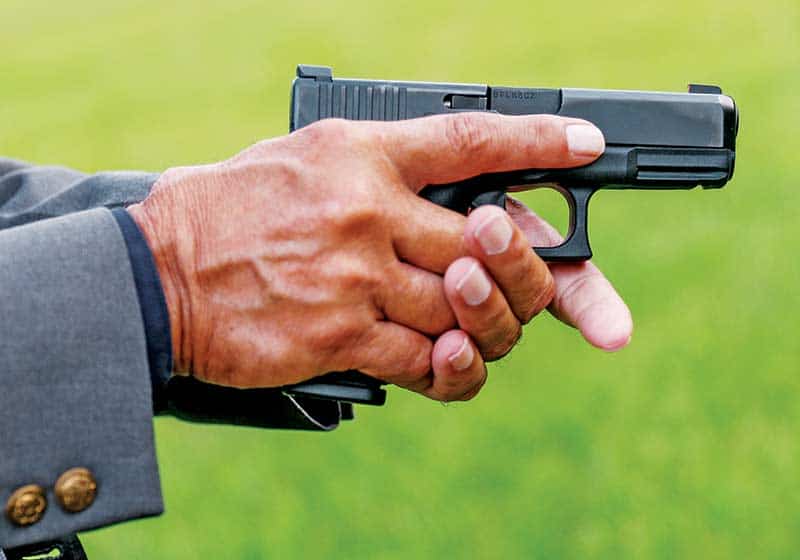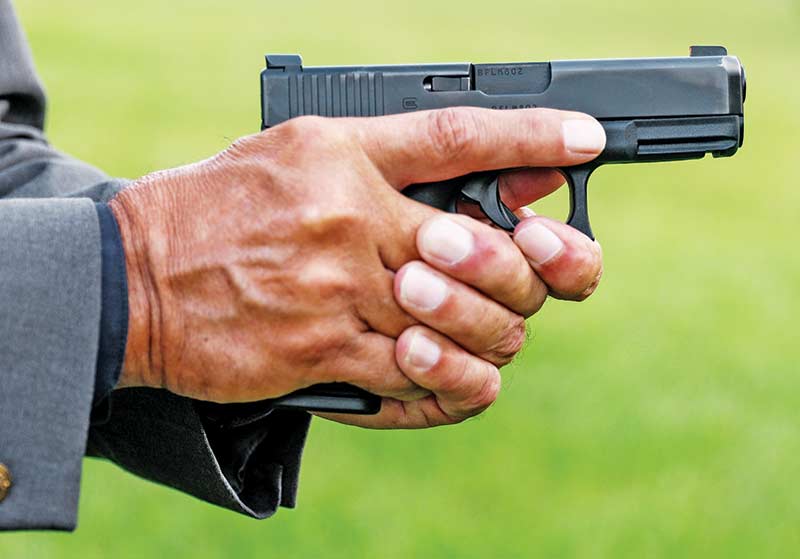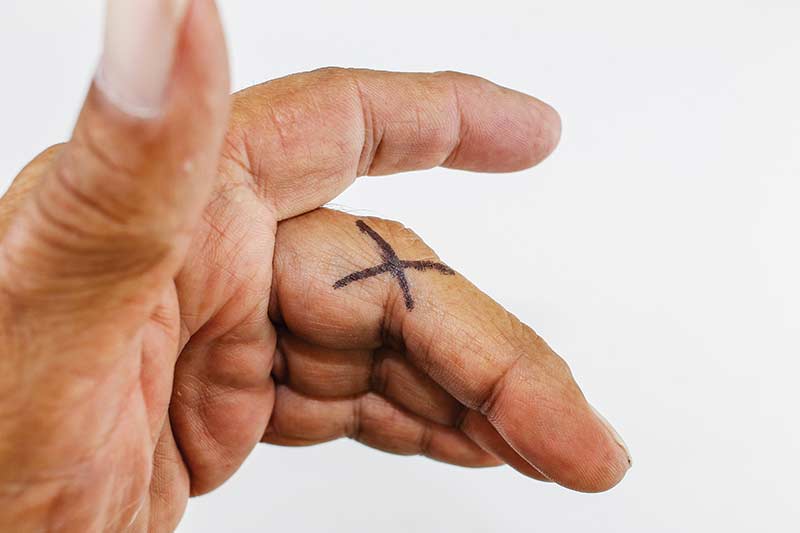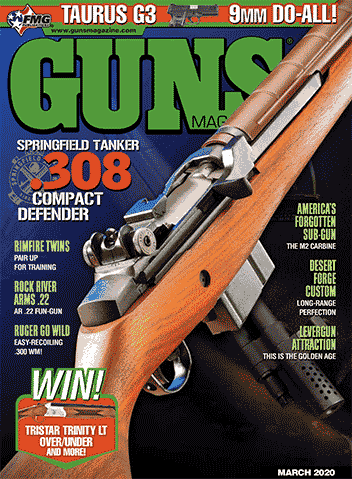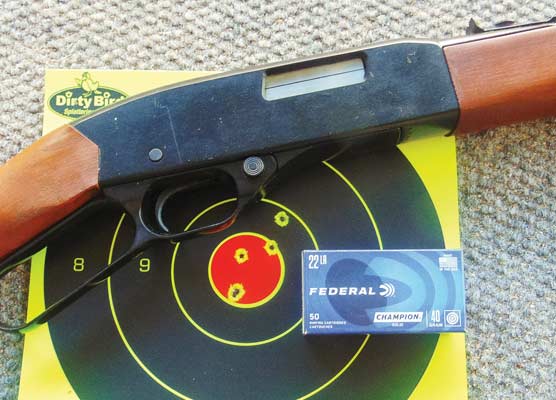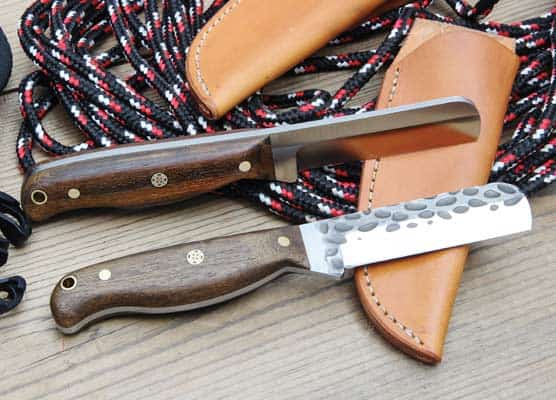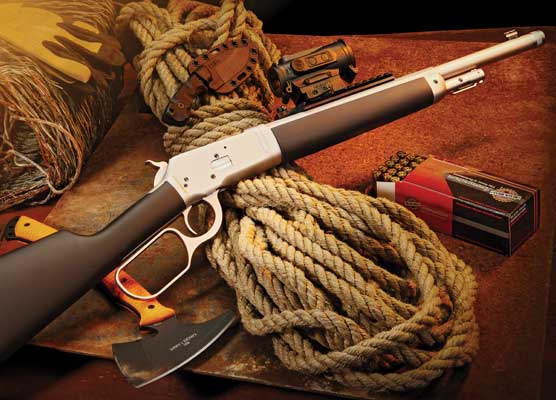The Wedge Hold
A quick fix for low or lateral shots
In 47 years as a handgun instructor, I’ve noticed more bad shots go low and to the shooter’s “weak hand” side than anywhere else. It’s often due to a sympathetic response called “milking” — when the trigger finger moves, the other fingers want to move with it, creating a movement like pulling a cow’s udder, honking the shot low and toward the less-supported weak hand side. The hard “crush grip” I’ve advocated in this space previously may cure the problem but it won’t necessarily cure another possible cause — too much or too little finger on the trigger face, pulling the gun muzzle sideways as the shot is triggered. Too little finger on the trigger can pull to the weak hand side while too much trigger finger pushes to the strong hand side.
Hence, the Wedge Hold — I’ve found it can be an effective cure for both low and lateral shots.
If It Feels Uncomfortable At First, It’s Nature’s Way Of Telling You You’re Doing It Right
Background
I started as a young police firearms instructor in 1972 when most cops were carrying double-action revolvers. All firing at less than the 50-yard line was done with the long, heavy DA pull. One of the most popular off-duty guns was the Smith & Wesson Airweight J-Frame, a 14-oz. revolver with — often — a 14-lb. trigger pull. On qualification days anything you could do to stabilize against such a heavy pull proved useful indeed.
My dad had started me early, and in my early teens I was shooting the S&W Bodyguard Airweight and Colt Cobra .38s. By trial and error I had come up with what I called the Wedge Hold. It goes like this:
The firing hand takes its “master grip” with the web of the hand high into the grip tang of an auto or at the high “horn” at the back of a double-action revolver’s frame, grasping tightly. The support hand comes in from the bottom in sort of a rolling motion. The first index point is critical: Let the middle finger of the support hand make contact with the bottom of the trigger guard, and lock it there tight. The two fingers below it should lock hard, too. Now, bring in the index finger under the trigger guard, tightly, without moving the other fingers. The index finger will end up ahead of the other three fingers of the support hand. It will vary a bit with hand and gun size but your support hand index finger should now be tightly wedged under the front of the trigger guard, probably at about the distal joint.
If you are doing it correctly, you should feel the muzzle cam upward. You should also feel the grip tang of an auto pistol press more firmly into the web of your hand. If it feels uncomfortable at first, it’s nature’s way of telling you you’re doing it right. You won’t feel the advantage until the actual shooting starts. If you want comfort, wrap yourself in a snuggly quilt or something — we’re here for performance. Remember, any new grasp, stance, or even gun may feel “uncomfortable” at first simply because it’s different. Give it a chance.
The Result
If too much or too little trigger finger is pulling the gun left or right, you’ve blocked it — the wedge effect of the forward finger is holding the gun more toward the center than before. Did some evil thing in your subconscious yell “Now!” and make you jerk the trigger? The wedge effect of the tight index finger camming the muzzle upward is mitigating it somewhat, or perhaps preventing it entirely.
Student feedback tells me this is one of the key “it made me shoot better” take-aways from my classes. The worst critique is usually “It doesn’t work better than how I was holding the gun before.” Pro tip — if the new technique is as good as what you had before, nature is telling you with some repetition it will very likely work even better if you just give it a chance.
Some shooters tell me it reduces recoil. Strictly speaking, this is not possible as we can’t change the laws of physics. What’s happening is the gun is moving less in the hand on recoil, creating the illusion of less “kick.” But, of course, “the perception is the reality …”
Caveats
Nothing works 100 percent with everyone with every gun. If you have a big hand with thick fingers and a short trigger guard handgun like a 1911 auto or a frontier-style single action revolver, there probably won’t be enough trigger guard for you to wedge under. Might you miss the grasp so the index finger of the support hand then ends up level with the other fingers? Yes, and if it happens, you’re just back to your regular two-hand grasp: no great loss.
Give it a fair try for a few hundred rounds. As I tell my students, anything new goes through a three-way triage. If it works better for you from the beginning, adopt it and put it in “the front pouch of your bag of tricks.” If you understand the rationale but it doesn’t work any better, put it one pouch back in the tool bag for use with a different gun, or perhaps, one of your students who can benefit from it more than you. And if it doesn’t work for you at all, flush it down the toilet and you’ve still had a valid learning experience. So far, the Wedge Hold has generally ended up in one of the two front pouches of my students’ tool bags of techniques.
